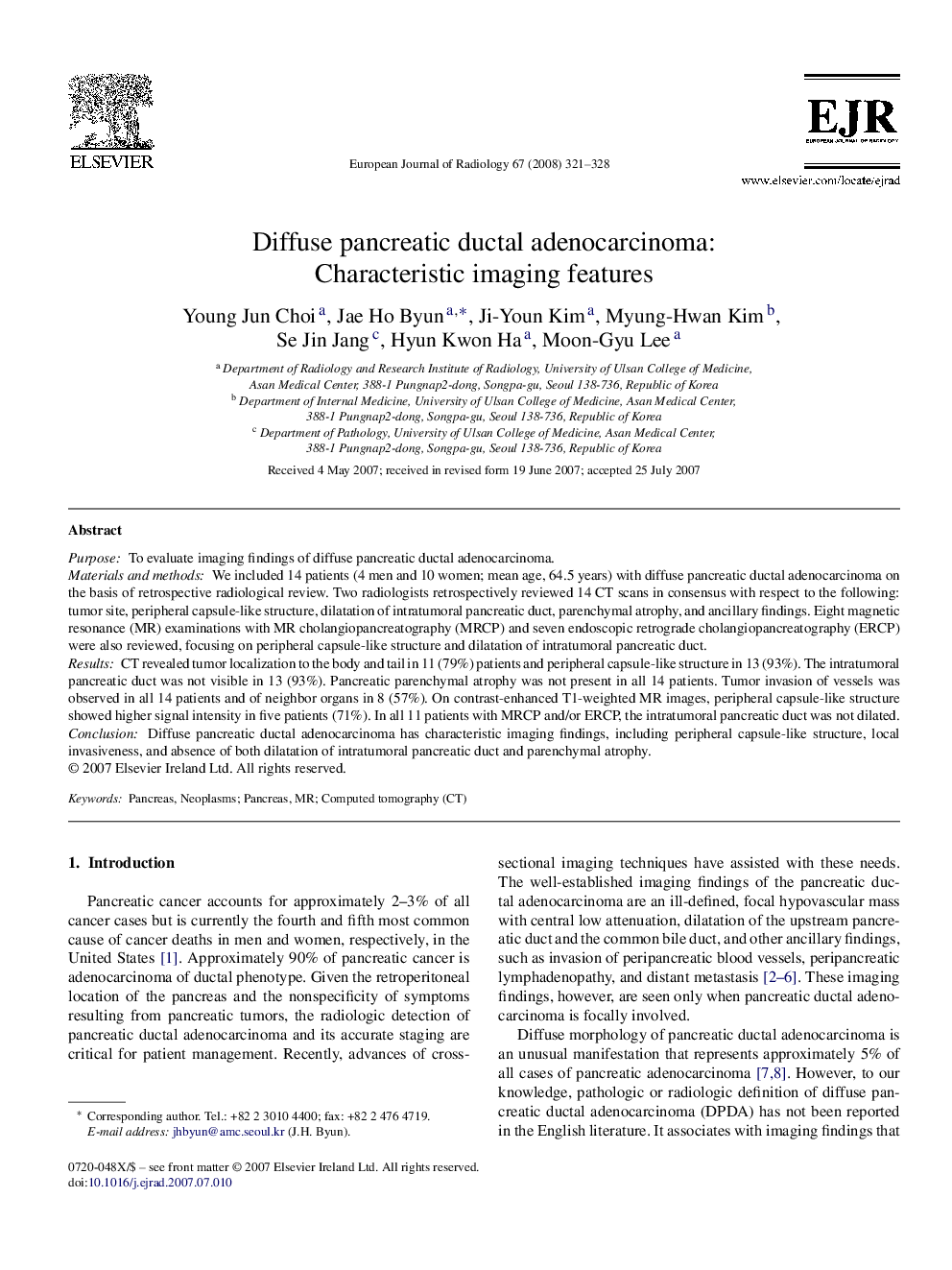| Article ID | Journal | Published Year | Pages | File Type |
|---|---|---|---|---|
| 4227798 | European Journal of Radiology | 2008 | 8 Pages |
PurposeTo evaluate imaging findings of diffuse pancreatic ductal adenocarcinoma.Materials and methodsWe included 14 patients (4 men and 10 women; mean age, 64.5 years) with diffuse pancreatic ductal adenocarcinoma on the basis of retrospective radiological review. Two radiologists retrospectively reviewed 14 CT scans in consensus with respect to the following: tumor site, peripheral capsule-like structure, dilatation of intratumoral pancreatic duct, parenchymal atrophy, and ancillary findings. Eight magnetic resonance (MR) examinations with MR cholangiopancreatography (MRCP) and seven endoscopic retrograde cholangiopancreatography (ERCP) were also reviewed, focusing on peripheral capsule-like structure and dilatation of intratumoral pancreatic duct.ResultsCT revealed tumor localization to the body and tail in 11 (79%) patients and peripheral capsule-like structure in 13 (93%). The intratumoral pancreatic duct was not visible in 13 (93%). Pancreatic parenchymal atrophy was not present in all 14 patients. Tumor invasion of vessels was observed in all 14 patients and of neighbor organs in 8 (57%). On contrast-enhanced T1-weighted MR images, peripheral capsule-like structure showed higher signal intensity in five patients (71%). In all 11 patients with MRCP and/or ERCP, the intratumoral pancreatic duct was not dilated.ConclusionDiffuse pancreatic ductal adenocarcinoma has characteristic imaging findings, including peripheral capsule-like structure, local invasiveness, and absence of both dilatation of intratumoral pancreatic duct and parenchymal atrophy.
